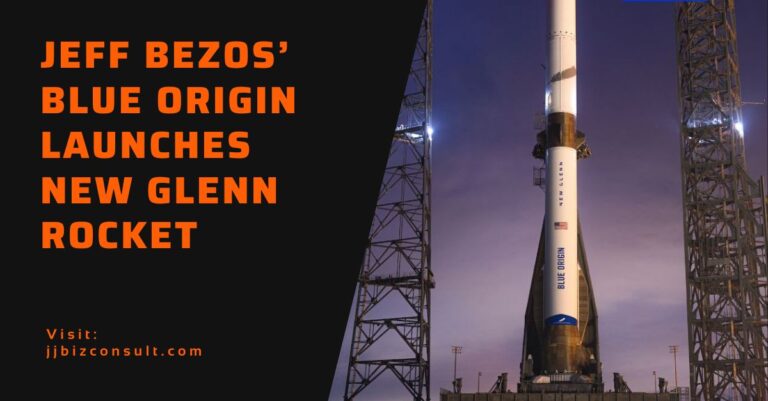
Focus on Amazon's Kuiper Satellite Initiative
Bridging the Digital Divide: Unveiling Amazon’s Kuiper Satellite Initiative. In today’s interconnected world, access to the internet is no longer a luxury but a necessity. Yet, a significant portion of the global population remains without reliable broadband connectivity, hindering their access to education, healthcare, economic opportunities, and essential services. To address this digital divide, Amazon has embarked on an ambitious project known as Kuiper, a constellation of satellites designed to deliver high-speed broadband internet to underserved regions worldwide.

Kuiper Satellite: A Beacon of Connectivity
At the heart of Kuiper lies a groundbreaking network of 3,236 satellites, meticulously positioned in low Earth orbit. These satellites will act as relay stations, beaming down internet signals to specially designed antennas installed in homes and businesses. With its vast coverage, Kuiper aims to bridge the connectivity gap, providing access to the internet for millions who currently lack it.
The Driving Force Behind Kuiper Satellelite
Amazon’s vision for Kuiper extends beyond simply providing internet access. The company envisions a future where Kuiper’s capabilities enable cloud computing services, disaster relief communications, and even agricultural monitoring. With its potential to revolutionize industries and enhance lives, Kuiper represents a significant step towards a more connected and equitable world.
Overcoming Challenges and Embracing Possibilities
Despite its immense potential, Kuiper faces formidable challenges. The sheer scale of the project demands substantial investment in satellite development, launch operations, and regulatory approvals. Additionally, ensuring equitable access and affordability for users in underserved regions remains a critical consideration.
Despite these challenges, Amazon remains steadfast in its commitment to Kuiper, recognizing its transformative potential. The company is actively collaborating with launch providers, regulatory bodies, and local communities to ensure Kuiper’s successful implementation.
A Glimpse into the Future with Kuiper Satellite
As Kuiper takes shape, its impact on underserved communities is poised to be profound. Imagine students in remote villages accessing online educational resources, entrepreneurs in rural areas connecting with global markets, and healthcare providers in underserved regions receiving real-time medical consultations. Kuiper holds the promise of unlocking a world of possibilities for those who have long been disconnected from the digital age.
With its ambitious scope and potential for societal transformation, Kuiper stands as a testament to Amazon’s vision of a more connected and equitable world. By bridging the digital divide, Kuiper has the power to empower individuals, communities, and nations, paving the way for a brighter future for all.
Amazon taps SpaceX’s Falcon 9 rocket to help launch Kuiper satellite
On December 1, Amazon revealed plans for three Falcon 9 launches with SpaceX, led by Elon Musk, for its Project Kuiper satellite network. This move, part of a multi-billion dollar campaign, aims to deploy a constellation of 3,236 satellites to provide global broadband internet, directly competing with SpaceX’s Starlink. Amazon’s investment commitment of $10 billion in Kuiper underscores its dedication to the project. The announcement follows previous rocket launch procurements from Blue Origin, United Launch Alliance, and Arianespace. Amazon faced a lawsuit in August, alleging insufficient consideration of SpaceX as a launch provider for most of its rides to space in 2021 and 2022. The company dismissed the claims as baseless.
In 2017, Amazon’s most substantial acquisition was the $13.7 billion purchase of Whole Foods.
Amazon’s inclusion of SpaceX rockets in its launch initiative was disclosed just three days before the deadline to submit a comprehensive defense against the ongoing shareholder lawsuit, as per a court schedule.
Amazon moved to dismiss the lawsuit in September, asserting that it would provide details of its defense in a subsequent briefing. Simultaneously, on the day of Amazon’s SpaceX announcement, the court set a deadline of Dec. 4 for Amazon to present its motion to dismiss.
SpaceX’s Falcon 9 rockets, known for their partial reusability, have been instrumental in rapidly deploying Starlink, propelling the Musk-led company to become the world’s largest satellite operator. In contrast, competitors like OneWeb, relying on Russia’s Soyuz rocket, faced challenges during the Ukraine-Russia conflict, leading to their shift to SpaceX.
U.S. regulators mandate Amazon to deploy half of the Kuiper network by 2026. Amazon initiated its satellite endeavors by launching two prototypes in October, with successful tests announced last month. The company anticipates conducting “early customer pilots” with deployed satellites in the latter half of 2024, utilizing Atlas 5 and the forthcoming Vulcan rocket from United Launch Alliance for initial launches.
Source: Reuters
Amazon Launches Project Kuiper Satellites – CNN

Amazon has entered the global internet connectivity race, launching the first two prototype satellites for its Project Kuiper network. In direct competition with SpaceX’s Starlink, the United Launch Alliance rocket, from Cape Canaveral, carried the prototypes. Rajeev Badyal, Project Kuiper’s VP of Technology, expressed confidence in their satellite design, emphasizing the importance of on-orbit testing. While the livestream was cut after the initial rocket stage, ULA confirmed “mission success.” If the mission proves successful, Amazon plans to deploy over 3,200 satellites, mirroring the business model of SpaceX’s Starlink, which currently operates over 4,500 satellites globally.
Revolutionizing Space-Based Internet
Companies like SpaceX, OneWeb, and Amazon are shifting from traditional geosynchronous satellites to “megaconstellations” in low-Earth orbit, aiming to provide high-speed internet directly to consumers. This departure from the distant geostationary orbit minimizes lag times, offering a more efficient and accessible solution. The emergence of these megaconstellations, consisting of thousands of satellites orbiting less than 600 miles above Earth, holds the potential to bridge the global digital divide, addressing the lack of basic internet access for nearly 3 billion people as of 2021, particularly in areas where conventional services like fiber optic cables are yet to reach.
Global Impact of Satellite Internet Competition
SpaceX leads in expanding its service, occasionally sparking geopolitical disputes. Notably, it faced criticism for limiting Starlink access to Ukrainian troops in the 2022-2023 Russia-Ukraine conflict. Amazon’s Project Kuiper may encounter similar scrutiny if successful. Gregory Falco from Cornell University wonders if Amazon plans dual-use capabilities, potentially making Kuiper a target, similar to Starlink in Ukraine, should governments and defense become major clients. The geopolitical implications of satellite internet competition are increasingly significant.
Controversies Surrounding Megaconstellations
While the prospect of a global internet revolution is promising, the extensive satellite megaconstellations required for global coverage face significant controversies. The increasing amount of space debris in low-Earth orbit raises concerns about potential collisions. The Federal Communications Commission is revising space debris mitigation policies, and the satellite industry commits to best practices, including satellite deorbiting. Amazon, in its sustainability plan, assures satellite maneuverability and pledges to safely deorbit test satellites. Astronomers express ongoing worries about the impact on the night sky, prompting Amazon to address concerns by testing antireflective technology and collaborating with organizations like the National Science Foundation.
Source: CNN
Amazon Q: A Powerful Tool to Improve your Customer Service
What is Market Trends? 10 Trends That Will Power Your Growth in 2023





